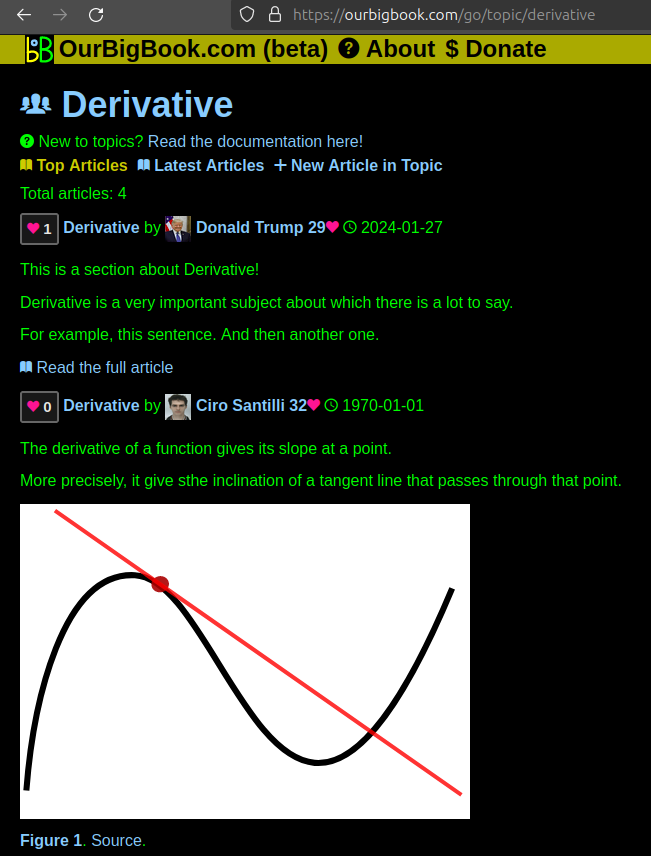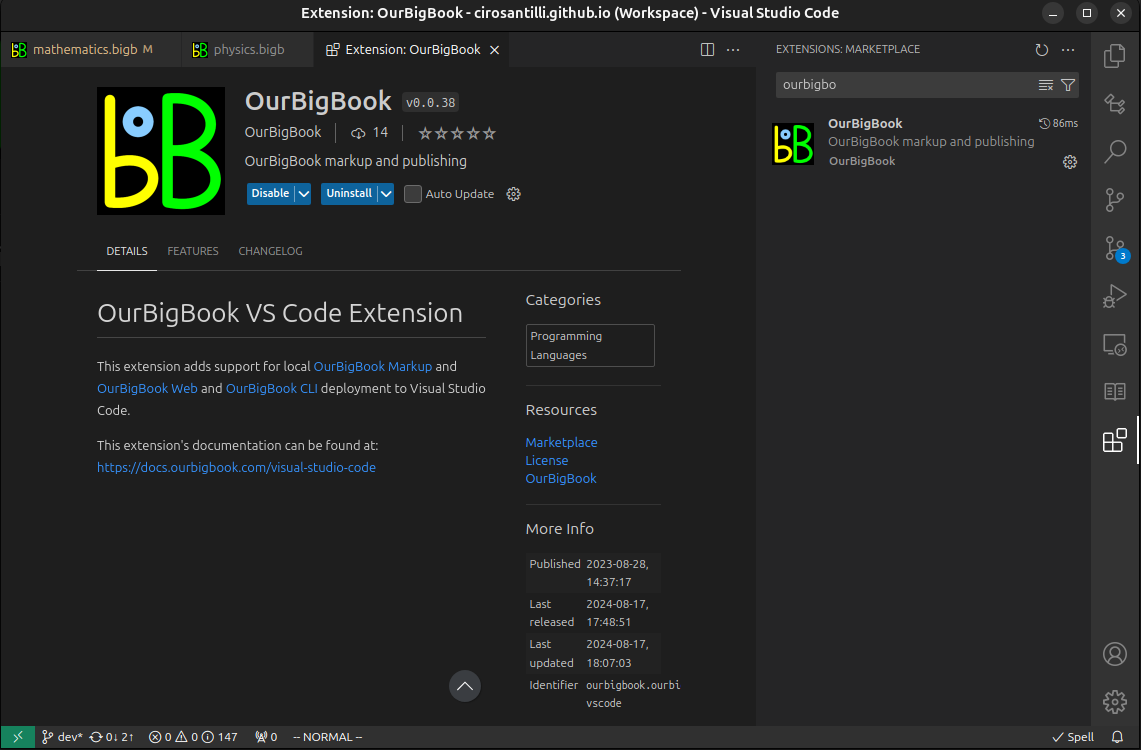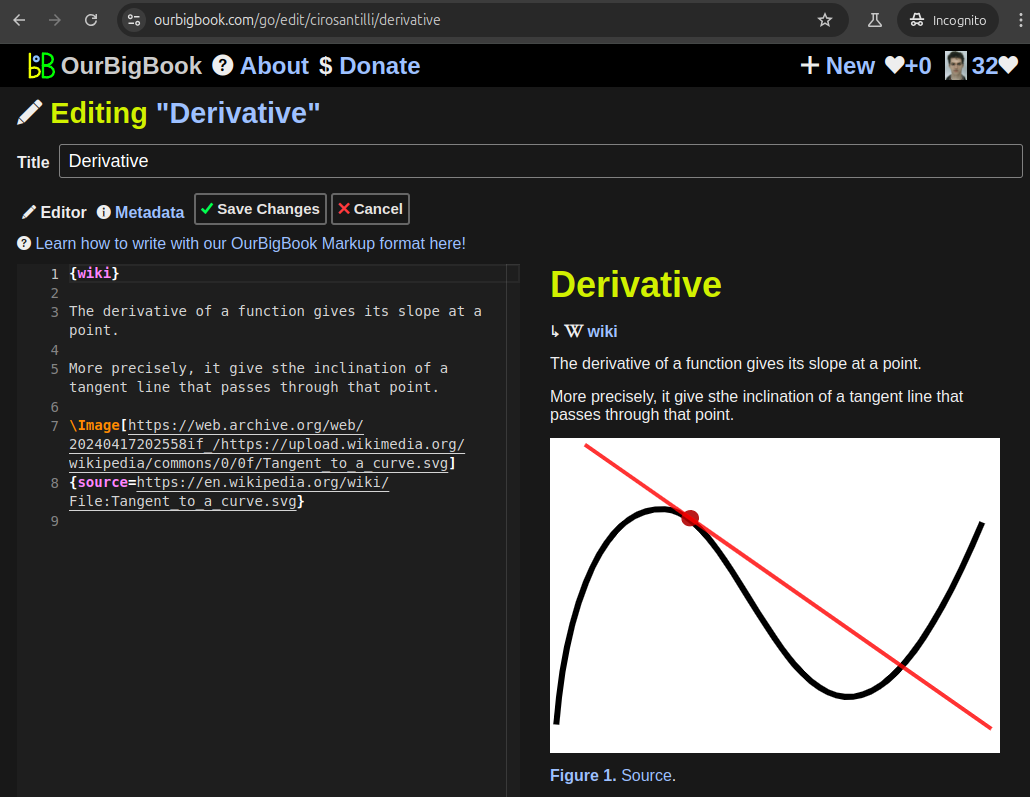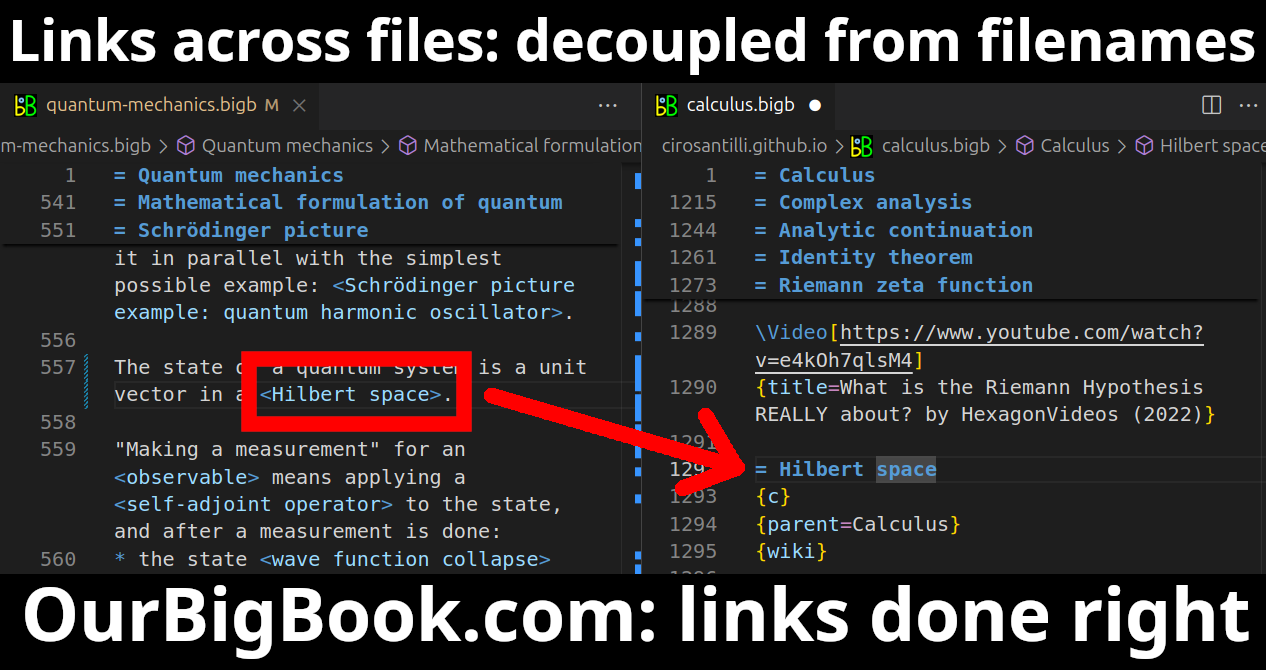Started in 1987 and written in Pascal, by the French from Pierre and Marie Curie University, the French are really strong in numerical analysis.
The fact that French wrote it can be seen in the documentation, for example doc.freefem.org/tutorials/index.html uses file extension
mycode.edp instead of mycode.pde where dep stands for "Équation aux dérivées partielles".Besides the painful build, using FreeFem is relatively simple, as can be seen from the examples on the website.
They do use a domain-specific language on the examples, which appears to be the main/only interface, which is a bad thing, Ciro would rather have a Python API as the "main API", which is more the approach taken by the FEniCS Project, but so be it. This domain-specific language business means that you always stumble upon basic stuff you want to do but can't, and then you have to think about how to share data between the simulation and the plotting. The plotting notably is super complex and they can't implement all of what people want, upstream examples often offload that to gnuplot. This is potentially a big advantage of FEniCS Project.
It nice though that they do have some graphics out of the box, as that allows to quickly debug common problems.
Uses variational formulation of a partial differential equation, which is not immediately obvious to beginners? The introduction doc.freefem.org/tutorials/poisson.html gives an ultra quick example, but your are mostly on your own with that.
On Ubuntu 20.04, the
freefem is a bit out-of-date (3.5.8, there isn't even a tag for that in the GitHub repo, and refs/tags/release_3_10 is from 2010!) and fails to run the examples from the website. It did work with the example package though, but the output does not have color, which makes me sad :-)sudo apt install freefem freefem-examples
freefem /usr/share/doc/freefem-examples/heat.pdeSo let's just compile the latest v4.6 it from source, on Ubuntu 20.04:
sudo apt build-dep freefem
git clone https://github.com/FreeFem/FreeFem-sources
cd FreeFem-sources
# Post v4.6 with some fixes.
git checkout 3df0e2370d9752801ac744b11307b14e16743a44
# Won't apply automatically due to tab hell.
# https://superuser.com/questions/607410/how-to-copy-paste-tab-characters-via-the-clipboard-into-terminal-session-on-gnom
git apply <<'EOS'
diff --git a/3rdparty/ff-petsc/Makefile b/3rdparty/ff-petsc/Makefile
index dc62ab06..13cd3253 100644
--- a/3rdparty/ff-petsc/Makefile
+++ b/3rdparty/ff-petsc/Makefile
@@ -204,7 +204,7 @@ $(SRCDIR)/tag-make-real:$(SRCDIR)/tag-conf-real
$(SRCDIR)/tag-install-real :$(SRCDIR)/tag-make-real
cd $(SRCDIR) && $(MAKE) PETSC_DIR=$(PETSC_DIR) PETSC_ARCH=fr install
-test -x "`type -p otool`" && make changer
- cd $(SRCDIR) && $(MAKE) PETSC_DIR=$(PETSC_DIR) PETSC_ARCH=fr check
+ #cd $(SRCDIR) && $(MAKE) PETSC_DIR=$(PETSC_DIR) PETSC_ARCH=fr check
test -e $(DIR_INSTALL_REAL)/include/petsc.h
test -e $(DIR_INSTALL_REAL)/lib/petsc/conf/petscvariables
touch $@
@@ -293,7 +293,6 @@ $(SRCDIR)/tag-tar:$(PACKAGE)
-tar xzf $(PACKAGE)
patch -p1 < petsc-hpddm.patch
ifeq ($(WIN32DLLTARGET),)
- patch -p1 < petsc-metis.patch
endif
touch $@
$(PACKAGE):
EOS
autoreconf -i
./configure --enable-download --enable-optim --prefix="$(pwd)/../FreeFem-install"
./3rdparty/getall -a
cd 3rdparty/ff-petsc
make petsc-slepc
cd -
./reconfigure
make -j`nproc`
make install
cd ../FreeFem-install
PATH="${PATH}:$(pwd)/bin" ./bin/FreeFem++ ../FreeFem-sources/examples/tutorial/Ciro's initial build experience was a bit painful, possibly because it was done on a relatively new Ubuntu 20.04 as of June 2020, but in the end it worked: github.com/FreeFem/FreeFem-sources/issues/141
One big advantage over FreeFem is that it uses plain old Python to describe the problems instead of a domain-specific language. Matplotlib is used for plotting by default, so we get full Python power out of the box!
One downside is that its documentation is a Springer published PDF link.springer.com/content/pdf/10.1007%2F978-3-319-52462-7.pdf which is several years out-of-date (tested with FEnics 2016.2. Newbs. This causes problems e.g.: stackoverflow.com/questions/53730427/fenics-did-not-show-figure-nameerror-name-interactive-is-not-defined/57390687#57390687
system of partial differential equations are mentioned at: link.springer.com/content/pdf/10.1007%2F978-3-319-52462-7.pdf 3.5 "A system of advection–diffusion–reaction equations". You don't need to manually iterate between the equations.
On Ubuntu 20.04 as per fenicsproject.org/download/Before 2020-06, it was failing with:but they seem to have created the Ubuntu 20.04 package as of 2020-06, so it now worked! askubuntu.com/questions/866901/what-can-i-do-if-a-repository-ppa-does-not-have-a-release-file
sudo apt-get install software-properties-common
sudo add-apt-repository ppa:fenics-packages/fenics
sudo apt-get update
sudo apt-get install --no-install-recommends fenics
sudo apt install fenics
python3 -m pip install -u matplotlibE: The repository 'http://ppa.launchpad.net/fenics-packages/fenics/ubuntu focal Release' does not have a Release file.GitHub account: github.com/hplgit
It should be mentioned that when you start Googling for PDE stuff, you will reach Han's writings a lot under his GitHub Pages: hplgit.github.io/, and he is one of the main authors of the FEniCS Project.
He also published to GitHub pages with his own crazy markdown-like multi-output markup language: github.com/hplgit/doconce.
Rest in peace, Hans.
Europium hydride (EuH₂) is a chemical compound composed of europium, a rare earth element, and hydrogen. It is part of a class of compounds known as hydrides, which are formed when hydrogen interacts with other elements. Here are some key points about europium hydride: 1. **Composition**: Europium hydride typically has the formula EuH₂, indicating that each europium atom is combined with two hydrogen atoms.
In many important applications, what you have to solve is not just a single partial differential equation, but multiple partial differential equations coupled to each other. This is the case for many key PDEs including:
This idea comes up particularly in the phase space coordinate of Hamiltonian mechanics.
A corn husk doll is a traditional craft that originates from various Indigenous cultures in North America, as well as from other cultures that have used corn husks as a material. These dolls are made from the dried outer leaves of corn cobs and are created by folding, tying, and shaping the husks into the form of a human figure, often resembling a woman or child.
Ambiguity resolution refers to the process of clarifying and determining the intended meaning or interpretation of ambiguous information, language, or situations. Ambiguity can arise in various contexts, including natural language processing, linguistics, communication, mathematical expressions, and even in decision-making scenarios. 1. **In Natural Language Processing (NLP)**: Ambiguity resolution involves disambiguating words, sentences, or phrases that can have multiple meanings based on their context.
Insight Guides is a well-known publisher of travel guidebooks and related content that focuses on providing detailed, informative, and visually appealing resources for travelers. Founded in the 1970s, Insight Guides strives to offer an immersive travel experience through its comprehensive guides, which include destination overviews, cultural insights, practical travel tips, and striking photography. In addition to traditional print guidebooks, Insight Guides has expanded its offerings to include digital content, mobile apps, and online resources.
Paul Horowitz is a prominent figure known primarily for his contributions in the field of electrical engineering and physics. He is a professor at Harvard University and has been involved in various research areas, including electronics, photonics, and the development of innovative technologies. Additionally, he is well-known for co-authoring the textbook "The Art of Electronics," which is highly regarded in the academic and engineering communities for its practical approach to circuit design and electronics.
Doppler radio direction finding is a technique used to determine the direction of a radio frequency transmission source by analyzing the Doppler effect on the received signal. The Doppler effect refers to the change in frequency or wavelength of a wave in relation to an observer moving relative to the source of the waves. In the context of radio direction finding, this effect is used to ascertain the location of a transmitter.
Pinned article: Introduction to the OurBigBook Project
Welcome to the OurBigBook Project! Our goal is to create the perfect publishing platform for STEM subjects, and get university-level students to write the best free STEM tutorials ever.
Everyone is welcome to create an account and play with the site: ourbigbook.com/go/register. We belive that students themselves can write amazing tutorials, but teachers are welcome too. You can write about anything you want, it doesn't have to be STEM or even educational. Silly test content is very welcome and you won't be penalized in any way. Just keep it legal!
Intro to OurBigBook
. Source. We have two killer features:
- topics: topics group articles by different users with the same title, e.g. here is the topic for the "Fundamental Theorem of Calculus" ourbigbook.com/go/topic/fundamental-theorem-of-calculusArticles of different users are sorted by upvote within each article page. This feature is a bit like:
- a Wikipedia where each user can have their own version of each article
- a Q&A website like Stack Overflow, where multiple people can give their views on a given topic, and the best ones are sorted by upvote. Except you don't need to wait for someone to ask first, and any topic goes, no matter how narrow or broad
This feature makes it possible for readers to find better explanations of any topic created by other writers. And it allows writers to create an explanation in a place that readers might actually find it.Figure 1. Screenshot of the "Derivative" topic page. View it live at: ourbigbook.com/go/topic/derivativeVideo 2. OurBigBook Web topics demo. Source. - local editing: you can store all your personal knowledge base content locally in a plaintext markup format that can be edited locally and published either:This way you can be sure that even if OurBigBook.com were to go down one day (which we have no plans to do as it is quite cheap to host!), your content will still be perfectly readable as a static site.
- to OurBigBook.com to get awesome multi-user features like topics and likes
- as HTML files to a static website, which you can host yourself for free on many external providers like GitHub Pages, and remain in full control
Figure 3. Visual Studio Code extension installation.Figure 4. Visual Studio Code extension tree navigation.Figure 5. Web editor. You can also edit articles on the Web editor without installing anything locally.Video 3. Edit locally and publish demo. Source. This shows editing OurBigBook Markup and publishing it using the Visual Studio Code extension.Video 4. OurBigBook Visual Studio Code extension editing and navigation demo. Source. - Infinitely deep tables of contents:
All our software is open source and hosted at: github.com/ourbigbook/ourbigbook
Further documentation can be found at: docs.ourbigbook.com
Feel free to reach our to us for any help or suggestions: docs.ourbigbook.com/#contact






